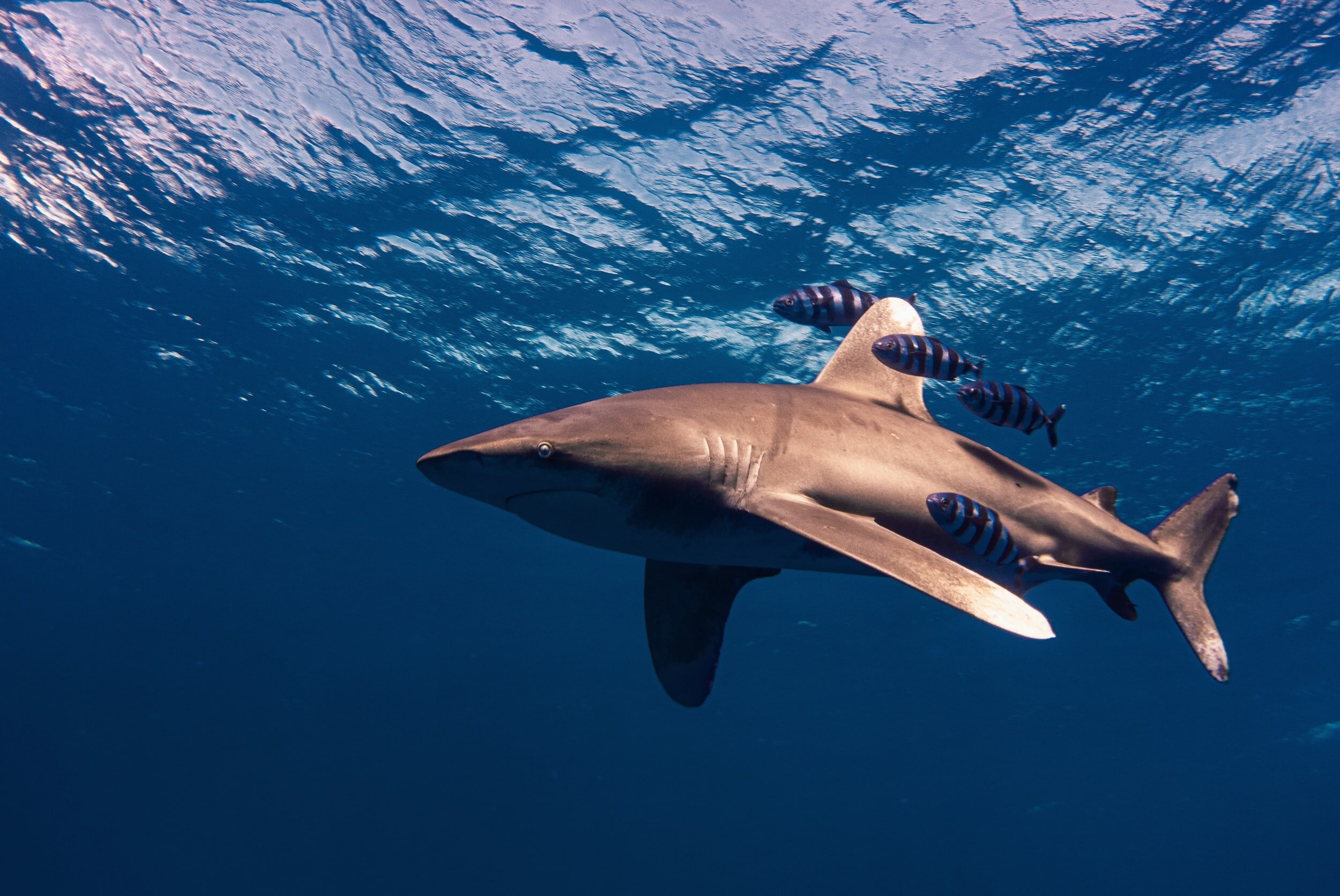A Beginner's Guide to Diving with Sharks
If the thought of diving with sharks immediately conjures images of a huge maneater gnashing his dagger-like teeth, you’ve been watching too many movies! Sensational scripts and news headlines regularly depict sharks as fearsome monsters of the deep, and despite being filmed over 45 years ago, thrillers such as Jaws continue to damage the reputation of the world’s shark population.
One of the first things a non-diver will often ask a scuba diver is ‘have you ever seen a shark?’. Well, not only have most divers seen a shark underwater, many actively seek out ‘sharky’ destinations, excited at the chance to spend time underwater with these fascinating predators.
‘Isn’t it dangerous?’, my landlubbing friends and colleagues wonder, ‘Aren’t you scared?’. And I patiently explain, once again, that the majority of sharks are actually quite shy, often only seen from a distance, and far more scared of us than we are of them. I add that when sharks do come in close, it’s because they are encouraged by baiting or feeding, and even then they are far too interested in snapping up a free meal to harass us ogling bystanders.
Diving with sharks isn’t just limited to chance encounters. Specific shark experiences are available almost anywhere sharks are regularly encountered. Traditionally, dive and boat operators have been keen to cash in on this local novelty, often using controversial methods such as chumming to attract sharks for expectant tourists. However, in recent years, advances in research and an appreciation of the benefits of shark tourism have led to improved practices and a renewed focus on safety. So for those of you keen to experience your very first shark dive, here are some of the many ways you can go about it.
SHARK CAGE DIVING
Exhilarating, exciting, but not without controversy, shark cage diving attracts shark enthusiasts and thrill seekers to destinations such as Guadalupe Island in Mexico and Neptune Island, Australia for adrenaline-filled encounters with the oceans’ apex predators, great white sharks. Cage systems may vary, but the aim is the same; participants watch from submerged metal cages as sharks are attracted in close using chum. Some cages sit just below the surface and air is supplied via a surface feed, allowing non-divers to take part, while other cages are suspended mid-water or even self-propelled.
Shark cage diving is one of the most popular shark experiences available, and yet it also causes the most disruption to shark behaviour and their environment. Chumming and baiting sharks is thought to alter their behavior, feeding interactions, and even migratory patterns, and as sharks are top of their food chain, this has a waterfall effect throughout their entire ecosystem. But cage diving does allow researchers to observe sharks in extremely close quarters, and helps promote a positive attitude towards these magnificent creatures.
NATURAL ENCOUNTERS
Sharks, like many other fish, display habitual behavior that can help us predict when and where they are most likely to be encountered. Large scale migration is common in many pelagic species such as great whites, oceanic whitetips, and whale sharks, and individual sharks will often return to the same waters year after year to mate and give birth to their young. It’s a good idea to check whether shark sightings in certain destinations are seasonal, and if so, when the optimum time to visit is.
Resident shark populations will also display recognised behaviour patterns, for example the thresher sharks of Malapascua who visit shallow reef cleaning stations at dawn every morning. Divers have the best chance of observing these sharks if they descend quickly and wait quietly on the seabed, minimising any disruption to the sharks’ normal routine. Encountering sharks in this way provides a valuable insight into their natural behaviour whilst causing minimal impact.
CONTROLLED FEEDING SESSIONS
Like any animal, sharks can be unpredictable, and it’s not always possible to guarantee they will make an appearance on cue. Many operators get around this by feeding shark populations in their local area, encouraging learned behaviour and ensuring sharks turn up for their daily meal. Tiger Beach in Grand Bahama is a good example of this. The resident tiger sharks patrol a fairly large patch and so operators feet them in the same spot every day to ensure divers and photographers get a piece of the action. Unfortunately, introducing food into any ecosystem causes knock-on effects and can disrupt normal feeding patterns. However, The Bahamas is one of few places in the world where sharks are thriving, and any activity that allows people to properly appreciate and understand sharks can only be a good thing.
SWIMMING OR SNORKELING
Encountering sharks isn’t just limited to those willing to don scuba gear. Some shark species spend a lot of time on or near the surface, and swimming with them is an excellent way to interact without the noise and distraction of scuba bubbles. Whale sharks are a prime example, these huge filter-feeding giants congregating in huge numbers to coincide with annual plankton blooms. Destinations such as La Paz and Bahia De Los Angeles in Mexico, Oslob in the Philippines, and Cenderawasih Bay in Indonesia are known whale shark hotspots, and interacting with them is heavily controlled to avoid disturbing these gentle giants.
It goes without saying that any shark encounter is exceptional, but the means by which you choose to interact with sharks will vary based on the species, their behavior, and the type of experience you would like to have. Shark Allies partners with Bluewater Travel, who specialise in bespoke scuba vacations to many of the world’s premier shark destinations. You can contact them at info@bluewaterdivetravel.com.

